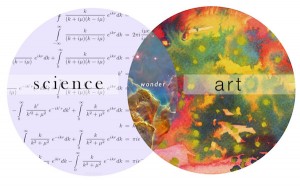I mentioned at the beginning of January that it would be difficult for me to keep up with writing because I would be particularly busy this year. I’m currently in the middle of pursuing a Master’s degree in Marine Ecology, so much of my time is being occupied with science. And with the various types of writing I’ve been trying to manage at the same time, that’s gotten me thinking about the similarities and differences between writing artistically and writing scientifically.
So to take advantage of my position between both worlds, I’d like to start discussing on my blog the comparisons between art and science. There are so many points to note, however, that the best way to go about it would be to create a whole subcategory around this topic! That’s why I decided to distribute my observations among several posts. To start off, here’s a brief discussion on the similarities and differences between art and science when it comes to reading. Enjoy!
How the Art is like the Science

At the intersection of Art and Science lies Wonder. – The Imaginary Foundation
Whether it’s for artistic inspiration or scientific knowledge, reading is reading at its core, simple as that. We read for one main reason: to acquire new ideas and information. That’s why when we read prose of any form, we always look for the same fundamental outline behind the content.
The first thing we seek is that big opener: a killer title and a few great introductory lines to hook us from the get-go. These are what help us decide whether the rest of a piece is worth reading, so a good first impression is always important. A striking title will draw our attention to the piece as a whole, and the first few lines after that will give us a sense of the author’s style and direction for the rest of the work.
From there, we move on to the introduction. Whether it’s the opening scene of a novel or the initial paragraphs of a scientific paper, a good introduction properly sets the tone and establishes the theme of the work, so that by the time we get to the heart of it, we understand what it is we’re reading about. That’s when we want to start seeing action. Conflict exists as much in fantasy worlds about magic beings as it does in the real world of scientific discoveries, and we want to see it resolved through the characters’ or the author’s methods until a conclusion is reached either through climactic scenes and denouement or analyzed results and discussions. And let’s not forget that satisfying takeaway feeling we seek when the reading is done!
So reading fiction and reading non-fiction are actually quite similar in many ways. But perhaps it’s in their differences that the true beauty lies…
How the Art is unlike the Science
Of course, outside of a basic structure, art and science differ significantly in their overall purpose. In one, we seek to lose ourselves in narrative, to feed our imagination with fictitious accounts of people who (in most cases) exist only in our heads. In the other, we seek to fill our minds strictly with the truth and consequently expand our knowledge and understanding of the real world around us. Perhaps that’s the greatest deciding factor when choosing which to read: whether we want to engage in fiction or reality.
 Art is intended to appeal to our creative desires. We indulge in artistic composition because it offers an escape from the common and tedious details of everyday life. Even true stories offer this release when narrated creatively enough, which is why even the most fascinating of real-life tales can only be considered such when told with a touch of art to embellish the facts. Literature is first and foremost a form of art, and thus any written work takes skill in creative technique in order to draw us in and keep us hooked to the very last word.
Art is intended to appeal to our creative desires. We indulge in artistic composition because it offers an escape from the common and tedious details of everyday life. Even true stories offer this release when narrated creatively enough, which is why even the most fascinating of real-life tales can only be considered such when told with a touch of art to embellish the facts. Literature is first and foremost a form of art, and thus any written work takes skill in creative technique in order to draw us in and keep us hooked to the very last word.
Science, on the other hand, appeals to our logical side. Those of us who seek knowledge about the real world indulge in scientific papers and non-fiction texts to satisfy our natural human curiosity. Unlike fiction that freely comes in various styles, scientific papers must always follow the same basic outline: title, abstract, introduction, materials and methods, results, and discussion. We always know exactly what to expect when we read academic texts, so we can focus on the content and zero in on the information we want. Writing itself is something of a science, for our minds have long been trained to search for a logical sequence in order to make sense of any piece of prose. If a written work is worth the time to read, we’ll come out a little smarter for it.
When it comes to creative writing, art and science are quite different in many ways, but they can also be surprisingly similar. I hope you’ll enjoy exploring the “likes and unlikes” between my two favorite topics with me in the future! Thanks for reading!


Trackbacks/Pingbacks